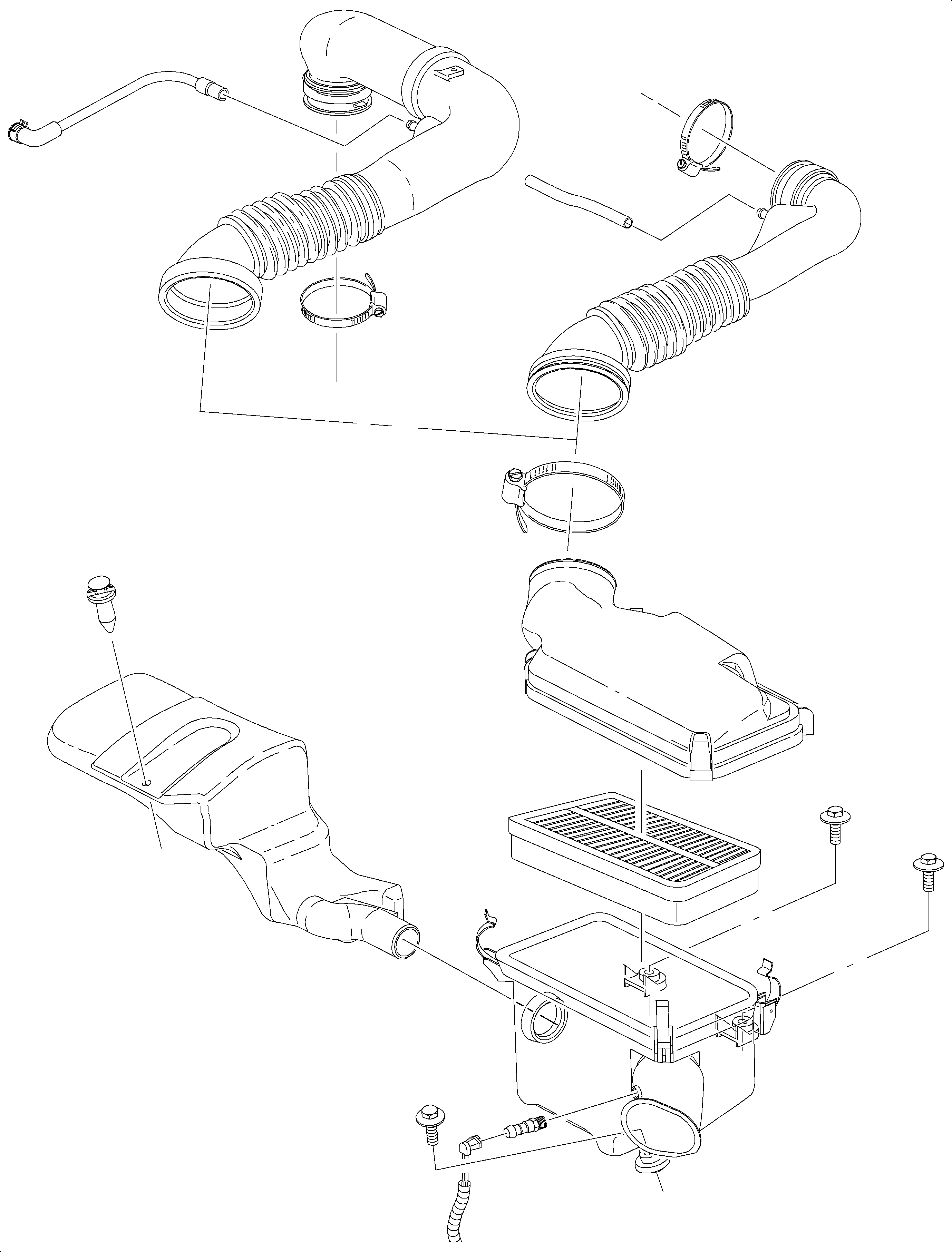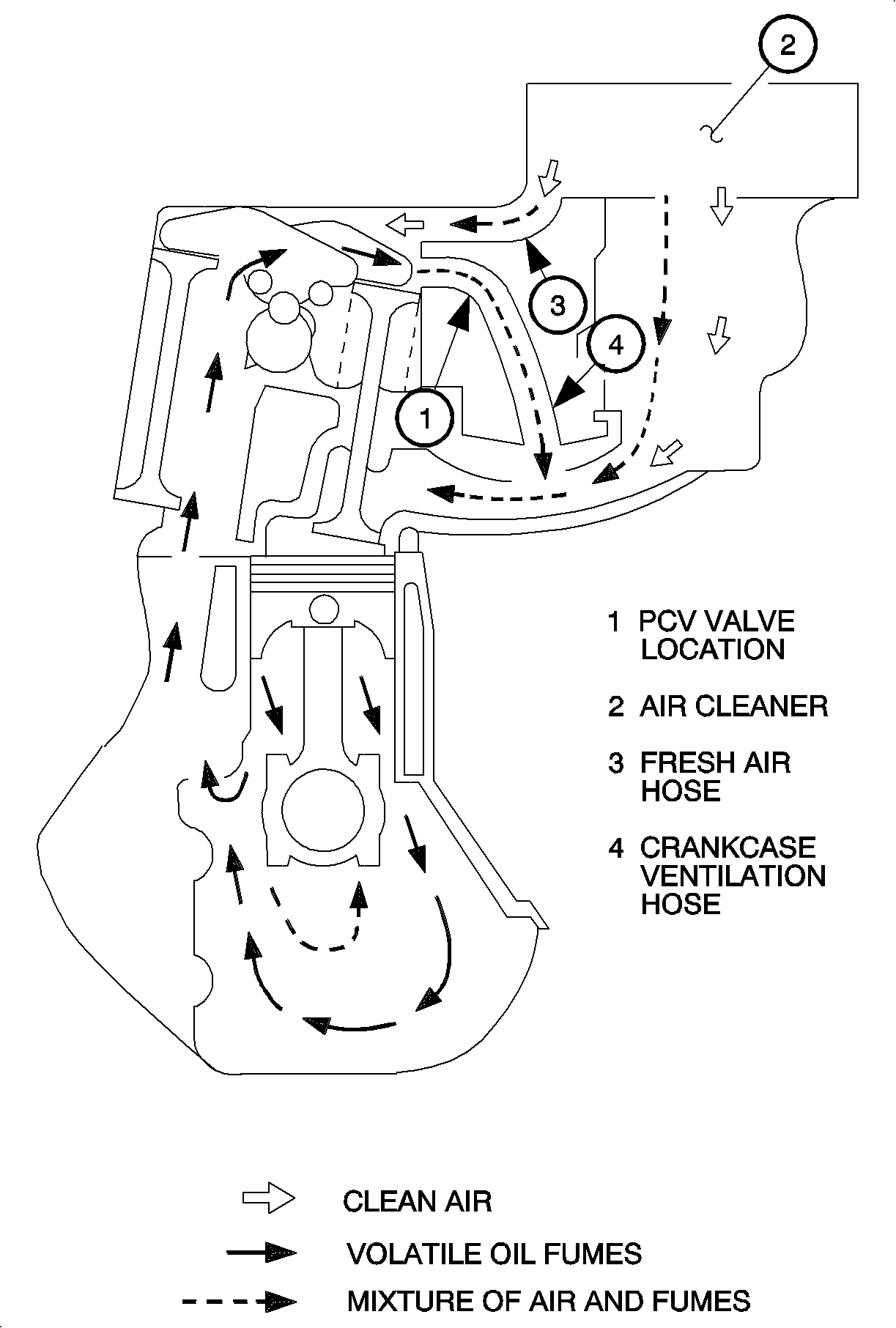MFI Air Induction System
The SOHC/DOHC engine has a tuned air induction system to provided maximum air flow at minimum noise levels. The air cleaner assembly (air box) is mounted on isolators, attached to the battery tray and left-hand side frame rail. The air cleaner assembly has a water drain to prevent element contamination and possible ingestion of water by the engine. The engine air inlet is located on the left hand side of the car in front of the underhood junction box. Air is routed to the air cleaner assembly and then on to the throttle body. Fresh air is also routed from the air intake tube (clean side) to the engine's cam cover for purging crankcase gases.

Crankcase Ventilation

In gasoline engines, small amounts of combustion gases seep past the piston rings into the crankcase. These crankcase blow-by gases contain undesirable hydrocarbon air pollutants. To prevent these vapors from escaping into the atmosphere, while allowing proper ventilation of the crankcase, the positive crankcase ventilation (PCV) system is used.
A positive flow of air is routed through the crankcase by the system and the airflow is metered through the PCV valve according to engine needs.
Clean air, downstream of the air filter, is admitted to the engine crankcase through the cam, or rocker, cover. This air mixes with the combustion gases in the crankcase and is then metered back into the intake manifold via the PCV valve. The PCV valve is located in the cam cover and is directly above a baffle plate inside the cover. This baffle plate removes oil vapors from the air flow before it enters the PCV valve and the intake manifold.
Eventually, under normal operating conditions, sludge from crankcase vapors may clog the PCV system. Adverse operating conditions like short trips in cold weather will speed up this sludge build up. When this occurs, the PCV system will no longer draw pollutants, unburned hydrocarbons, from the engine crankcase. These pollutants are then forced up into the air cleaner through the PCV breather tube, but without fresh air to dilute and help remove them, some remain in the crankcase. In time, this causes condensation of gases in the crankcase. This results in the formation of acids, sludge build-up, and oil dilution.
Theory Of Operation

The positive crankcase ventilation system flows fresh air into the engine crankcase to dilute the unburned hydrocarbons present and route them into the intake manifold where they are consumed during the combustion process.
The PCV valve controls or meters this flow of crankcase vapors during all modes of engine operation. Each PCV valve is sized for a specific application to provide a flow rate that will meet the engine's needs during idle, high speed, and heavy load conditions. PCV valves are not interchangeable based on their external dimensions. They must meet the designed flow requirements.
The PCV valve meters the vapor flow under all engine operating conditions.
During Deceleration, Low Speed, and Idle
During engine deceleration and idle, manifold vacuum is high. The high vacuum overcomes the force of the PCV valve spring, and the valve bottoms in the manifold end of the valve housing. This does not completely stop the flow of crankcase vapors into the intake manifold, but it does restrict them to a specified value for each engine.
During Acceleration, High Speed, or Heavy Load
When the engine is accelerated, operated at high speed, or under heavy load, the manifold vacuum is less than it would be at idle or during deceleration. During acceleration, the PCV valve spring force is stronger than the vacuum pull from the intake manifold. This forces the valve toward the crankcase end of the valve housing. With the valve in this position, more crankcase vapors can flow into the intake manifold because the flow path offers less restriction. This larger flow path offsets the fact that the manifold vacuum is less during these operating conditions.
